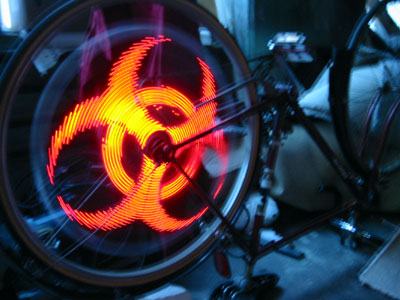Embedded development boards have, in the last few years, progressed from being expensive platforms only available to professional or commercial developers, to almost-commodity devices accessible to anybody with an inclination to tinker. In the same time, the processing power available has progressed from cramped 8-bit micros to something resembling a previous-generation desktop, in a board the size of a deck of cards. As a result, there has been an emergence of hobbyist devices, ranging from the intimidating to the inane, of which we'll highlight a few here. Deeply impressive: Autonomous Trans-Atlantic Sailboats [From: ] The Microtransat Challenge is a trans-Atlantic race of fully autonomous sail boats, designed to stimulate development of autonomous sailing boats. There are currently 12 teams registered for the 2009 race, with control systems ranging from to a custom FPGA-based system PCB. Resilience, intelligence, a wide range of sensor options and energy efficiency are key to success for these boats – a task to which modern embedded processors are ideally suited. Inevitable, in a way: RFID Cat Doors
[From: http://ioanghip.googlepages.com/catdoor – controller laptop not shown] The key to invention is to recognise a need, and address it. In this case, the need is controlling the use of a cat door - whether to prevent other cats entry, or to control what the cat is allowed to bring in with it. In both these cases, the hacked-together prototype is a mishmash of commodity desktop computer hardware and components - a mixture that ideally lends itself to being simplified through the use of a smart embedded controller. While this may seem like an obscure product, commercial variations now exist: RFID Cat Door Just cool: Persistence-of-Vision LED Bike Lights
 [From: http://www.ladyada.net/make/spokepov/index.html] Persistence-of-vision means that rapidly-moving light sources will appear to be present for longer than they actually are, in this instance allowing a rapidly spinning line of LEDs to appear as a solid surface. Combine this with a small micro-controller, a sensor capable of determining rotational position, and you have the ability to display arbitrary images – or to turn your bicycle into a stunning mobile billboard. Again, this appears to be a fairly niche device – more of a toy than anything – but it has been commercialised by a number of companies: SpokePOV Kit MonkeyLectric Monkey Light Hokey Spokes The focal point here is that the line between hobbyist and commercial development is blurring: build something interesting, and you might find people lining up to give you money.
[From: http://www.ladyada.net/make/spokepov/index.html] Persistence-of-vision means that rapidly-moving light sources will appear to be present for longer than they actually are, in this instance allowing a rapidly spinning line of LEDs to appear as a solid surface. Combine this with a small micro-controller, a sensor capable of determining rotational position, and you have the ability to display arbitrary images – or to turn your bicycle into a stunning mobile billboard. Again, this appears to be a fairly niche device – more of a toy than anything – but it has been commercialised by a number of companies: SpokePOV Kit MonkeyLectric Monkey Light Hokey Spokes The focal point here is that the line between hobbyist and commercial development is blurring: build something interesting, and you might find people lining up to give you money.

Neat things you can do with embedded systemsPosted in New Development on June 09, 2009 by Administrator |



